The Legacy of Raja Deen Dayal
| 5th Oct.1993 – 7th Nov.1993 | Matighar, IGNCA |
| 31st Mar.1994 – 15th Apr.1994 | Bharat Bhawan, Bhopal |
| 8th Oct.1994 – 30th Oct.1994 | Pirmal Gallery, National Centre for the Performing Arts, Bombay |
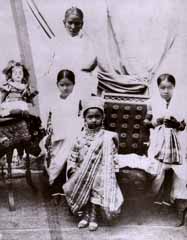 |
The Indira Gandhi National Centre for the Arts, established in the memory of Smt. Indira Gandhi is a centre encompassing the study and experience of the arts-each form with its own integrity, yet within a dimension of mutual interdependence related with nature, social structure and cosmology. The arts comprise the fields of creative and critical literature, written and oral, the visual arts, ranging from architecture, sculpture, painting and graphics to general material culture, photography and film, the performing arts of music, dance and theatre and all else in fairs, festivals and lifestyles that have an artistic dimension. Through diverse programmes of research, publication, training, creative activities and performance IGNCA seeks to place the arts within the context of the natural and human environment. One of its primary aims is to serve as major resource and research centre. In its Cultural Archives the IGNCA acquires and preserves artefacts and audio-visual material on the various art-forms. These are further enhanced in their value by the compilation of additional data on the collection.
|
 |
The Raja Deen Dayal Collection of glass-plate negatives and some of the photographer’s work equipment is one such collection. This collection has been acquired from the descendants of the 19th century photographer Raja Deen Dayal.
The legacy of Raja Deen Dayal is an exhibition mounted from the collection of glass-plate negatives of India’s most accomplished photographer of the 19th century, and an introduction to the life and works of Raja Deen Dayal. The photographer beyond the portrayal of his subjects draws a picture of his time. He translates his perceptions through his medium and thus a collection of photographs is the milieu as experienced and described by him. Raja Deen Dayal’s photographs offer us not only vivid insights into India’s rich art and cultural heritage but also provide valuable testimonials for historians. The exhibition is thus broadly, though fluidly, arranged in three sections. These deal with the key indicators of a land and its people describing the ethos of the age. The central section is devoted to the photographer himself. |
|
The Place: The photographer’s record of the physical setting in which he lived and worked, and through which he travelled, the natural and man made physical substructure. The People: The individuals who peopled the setting, the various and varied inhabitants. The Event: The happenings and activities of the people which enlivened the setting, marked the passage of time and indicated the modes of life then, as perceived by the photographer. Yet, in any creative endeavour the artist himself is the crux of any display of his works. Thus the central rotunda, to which one returns time and again after glimpses of his work to view the persona of, the various influences on, the individual methods and technical expertise, of Raja Deen Dayal. Deen Dayal was born in 1844, at Sardhana in Meerut, to a family of jewellers. At the age of 20, he had completed technical training at Thomason’s Civil Engineering College at Rourkee and held the prestigious appointment of Head-estimator and draughtsman with the Public Works Department, Indore, It was here that he was introduced to photography. By the time he was 30, his familiarity and brillance with the medium attracted enough attention to grant him the patronage so essential to all artists. His first patron was Maharaja Tukoji Rao II of Indore, who introduced him to Sir Henry Daly, the British Agent at Indore. He then had the opportunity to photograph the visit of the Prince of wales and his entourage, in 1875. This was followed by his appointment to Lord Dufferin’s office as “Photographer to His Excellency, the Viceroy”. Encouraged by the growing appreciation and consequent demand for his photographs he decided to trade a lucrative career in Government Service to photograph the countryside. His albums of India views and ancient monuments became very popular and were bought as memorabilia and gifts by the British and Indian Royalty. During his sojourn through Hyderabad he photographed the Nizam at a parade. Astute and ambitious, he presented the photographs to the Nizam who promptly appointed him as “Court Photographer”. In the Nizam’s service from 1885 to his death, he kept a regular pictorial account of the princely menage, photographing royal entourage and visiting nobility, lavish parties, extravagant parades, hunting expeditions as well as palaces and their interiors and the relief work organized by the Nizam in times of famine. In appreciation of his work and dedication, the Nizam bestowed on him the honorific title of “Raja” and composed a couplet in Urdu in his name. |
|
Towards the turn of the century Raja Deen Dayal was acclaimed as one of the leading exponents of photography in India. Queen Victoria honoured him with a Royal Warrant, and his exhibits were acclaimed at international exhibitions. He set up flourishing studios in Secunderabad and Indore, a zanana studio for women in Hyderabad as well as owned the largest work shop-studio in Bombay. Raja Deen Dayal died in 1905, bequeathing to history an intimate glimpse into the lives of princes, and the British, ordinary fold and tribals, as well as vistas of archaeological sites, monuments and the architectural heritage of the country. THE PHOTOGRAPHER |
 |
Educated as an engineer and working as a draughtsman, Raja Deen Dayal was 30 when he became a professional photo-grapher. Even when photography was in its early stages of development, he came to be known as the greatest Indian photographer of the 19th century. Just at that time dry plates had replaced the wet plates, signifying a turning point in the history of photography. Raja Deen Dayal who never seems to have used the wet plates, had exposed thousands of dry plates using large format bellows cameras of various sizes ranging from 43/4 “x61/2″ to 12″x15”. The cameras were primitive in operation, but with complete mastery over them he produced photographs of superb technical quality.
Raja Deen Dayal’s negatives were printed on the P.O.P paper by daylight. They were later gold-toned for permanence. Even after 100 years, Raja Deen Dayal will be remembered as a master camera artist whose style of picture-making has remained unsurpassed. T. Kasi Nath |
| A | Portrait of Raja Deen Dayal. Attributed to his son Gyan Chand.c.1904. |
| B | Certificate awarded to Deen Dayal by the Worlds-Columbian Commission, Chicago,1893. |
| C | The British Resident in Hyderabad with a group outside Raja Deen Dayal Studio in Secunderabad.c.1902. Raja Deen Dayal standing at left, placed inside Display case*. |
| D | Raja Deen Dayal with his sons Gyan Chand (seated to his right) and Dharm Chand (standing), grandchildren and his lawyer Pyrelal.c.1901. Photographs by Adam Khan (Assistant to Raja Deen Dayal) placed inside Display case*. |
| E |
|
| F |
|
| G | 2 Photographs of models of Daylight studios. |
| H | Raja Girdhur Dass.c.1897 Stereo-photograph. |
| I | People at a meal. Photographs attributed to Gyan Chand. |
| J | Camera |
| K&L | Glass plate negatives. |
| M | Lenses. |
| N | Studio Props and equipment.
|
| O | Display case. |
| P | Raja Deen Dayal in his younger days. A self portrait.c.1880s.
Raja Deen Dayal a little before his death. Photograph by Gyan Chand.c.1905 |
| * | Original equipment from the studio of Raja Deen Dayal. |
THE PLACE
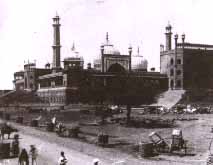 |
With in-born love for his country Raja Deen Dayal travelled extensively. He toured the country by rail and bullock-cart, taking along mounds of photographic paraphernalia from stacks of heavy glass-plates to bulky cameras. Academic training in draughtsmanship and his own painterly vision enabled him to bring out amazing depths, details and breath-taking widths with large uniform areas of sharpness and highly accentuated perspectives. He photographed ancient monuments, archaeological sites, places of worship, forts, palaces and their interiors, townscapes, forests and rivers, leaving behind vital historical and cultural documentation. |
| 1 | Mausoleums of the Bundela chiefs at Orchha.c.1882. |
| 2 | People on the banks of the Musi River, watching floods. |
| 3 | Amber Fort Wall |
| 4 | View of a forest |
| 5 | People walking up a hill; note the camera at right. |
| 6 | Temple steps |
| 7 | Lake near Indore.c.1878 |
| 8 | Reversing Station, Khandala c.1880. |
| 9 | Street leading to the Charminar, Hyderabad. |
| 10 | Bridge on the River Musi. |
| 11 | Birds’s-eye view of Fetehpur. |
| 12 | Jal Mahal, Deeg.c.1890. |
| 13 | Street scene, Udaipur.c.1880. |
| 14 | Side view of Fort, Gwalior. |
| 15 | Benaras Ghats.c.1880. |
| 16 | View of the Jama Masjid, Delhi,c.1880 |
| 17 | Wall of a ravine at Amber. |
| 18 | Road leading to Crawford Market, Bombay.c.1875. |
| 19 | Arrival of English Mail, Simla. |
| 20 | Ships in water, Calcutta.c.1892. |
| 21 | Construction of bridge on river. |
| 22&23 | View of High Court, Madras.c.1897. |
| 24 | Writers’ Building, Calcutta. |
| 25 | Western railway Office at Marine Drive, Bombay.c.1898. |
| 26 | Street Scene, Gopalpur. |
| 27 | Apollo Bunder from the Yacht Club, Bombay.c.1898. |
| 28 | Taj Mahal c.1887. |
| 29 | Stone Gateway, Chirag-i-Delhavi, Delhi. |
| 30 | Temple complex at Orchha. |
| 31 | Details of a carved pillar. |
| 32 | Sculpture of ‘Bhairavi’ at Ellora. |
| 33 | Sally Port Gate, Seringapatnam.c.1899. |
| 34 | Hawa Mahal Jaipur.c.1890. |
| 35 | Tomb of Sheikh Salim Chisti, Fatehpur Sikri.c.1880. |
| 36 | Interior at Sheesh Mahal, Amber Fort. |
| 37 | Interior at Chowmala Palace, Hyderabad. |
| 38 | Drawing-room of an official’s house. |
| 39 | Chinese Arch erected at Alwar, Rajasthan, to welcome the Prince of Wales.c.1876. |
| 40 | Bed-room of an official’s house. |
| 41 | Carved pillar and doorway of enterance at Karla Caves, Bombay. |
THE PEOPLE
 |
Raja Deen Dayal’s reputation and genius as a photographer was so wide spread that an ever-increasing circle of clients vied with each other to present their best profiles to him. An unerring eye for detail, skill and patience together with unique patterns of composition became hallmarks of his portraits. Even the props and accoutrements were keenly attended to, in order to achieve the right essence of the event, group or person. Thus these brilliantly reflect the mores and tastes of the times. In his portraits, whether of bejewelled Maharajas flanked by attentive courtiers, tribals, little children or the imperious colonial rulers, his artistic vision captured vividly every poignant factor. |
| 42 | Maharaja Raghubir Singh of Bundi.c.1890. |
| 43 | Raja Rai Rayan Bahadur,c.1884. |
| 44 | Maharaja Anand Rao Pawar of Dhar, holding a child.c.1884. |
| 45 | A family of seven. |
| 46 | Sunder Lal’s sister.c.1904. |
| 47 | Raja Rai Royan Anantwant with sisters on a sofa.c.1891. |
| 48 | Members of the Zoroastrian Association.c.1898. |
| 49 | Prince Dewas Junior with friends.c.1892. |
| 50 | Maharani of Kapurthala in Mughal dress. |
| 51 | Col. Afsur-ul–Mulk’s baby in toy-carriage.c.1907. Photographs attributed to Gyan Chand. |
| 52 | Group of tribals with a chained convict, Secunderabad.c.1898. |
| 53 | Nizam’s eldest daughter, Hyderabad.c.1898. |
| 54 | Group with a child in a perambulator. Hyderabad.c.1898. |
| 55 | The Maharaja Scindia of Gwalior with Mr. J.W.Johnston and pandit Dharam Narain.c.1891. |
| 56 | S.B.Ramaswamy Iyengar, marriage group.c.1901 |
| 57 | A Central Indian Chieftain with his clansmen.c.1880. |
| 58 | Fateh Sinh Rao, the eldest son of the Gaekwar of Baroda.c.1891. |
| 59 | Gypsy women with a group of Europeans, Simla.c.1880. |
| 60 | Lady, seated and standing.c.1893 |
| 61 | A ‘Bairagi’ smoking a ‘ganja’ chillum.c.1898. |
| 62 | A performer of the Chateri circus. |
| 63 | Young Women playing a game of ‘tigers & sheep’.c.1900. |
| 64 | A lambani mother and child. |
| 65 | Man tapping toddy.c.1898. |
| 66 | Mendicant with trident. |
| 67 | Group of children; famine victims. |
| 68 | Prince Ranjitsinhji with cricket bat.c.1903. |
| 69 | Miss Nandy, Hyderabad. |
| 70 | Gen. Sir James Willcocks with Capt.Ross.c.1904. |
| 71 | Sister Nivedita c.1902. |
| 72 | Mass School Fete, St. George’s Girls’ Seminary, Chadderghat.c.1890. |
| 73 | Sir Jamesetji N. Tata.c.1899. |
| 74 | Baba Puran Dass. |
| 75 | Princesses after a game of tennis. |
| 76 | Rev. Fr. Julius with friends.c.1892. |
| 77 | Miss Dazy Mowbory in India dress.c.1905. |
| 78 | C.C.James in fancy dress, Bombay.c.1905. |
| 79 | Mrs. Newport Tinley at Mhow.c.1897. |
| 80 | Military group. |
| 81 | Mrs. Hunt’s children in a go-cart. |
| 82 | Masquerade, Secunderabad.c.1892. |
| 83 | Nawab Mohammed Askhar Khan Bahadur and friends.c.1893. |
| 84 | Mrs. Noon’s children.c.1898. |
| 85 | Miss Bell, Hyderabad.c.1898. |
| 86 | A British wedding group. |
| 87 | Private W.Long, 13th Hussars, Trimulgarry.c.1905. |
| 88 | Sir Fredericks Roberts and Party, Simla.c.1887. |
THE EVENT
 |
Raja Deen Dayal’s skill with the camera attracted a wide spectrum of patrons and clients. Catering to them he has pictorially recorded events from the social to the historic. As ‘Special Photographer’ to Viceroys he photographed vice-regal tours, hunting expeditions, military maneuvres and social affairs including the masquerades so popular with the British. Later as ‘Court-Photographer’ he recorded the thrice-weekly durbar, the Nizam’s grandiosity and opulence, visiting dignitaries and every event at court. He even documented the ravages of famine and the relief measures arranged by the Nizam. In 1902-03, he was especially appointed to photograph the Delhi Durbar, recording the congregation of Indian Princes. |
| 89 | Two keepers at a durgah. |
| 90 | Bandar-wallah with a crowd, Secunderabad.c.1898. |
| 91 | Carpenters at work. |
| 92 | The Nizam in procession, with a contigent of his Arab irregular soldiers.c.1890s. |
| 93 | Elephant transporting logs.c.1903. |
| 94 | A tribal family and their dwelling. |
| 95 | Havoc created by floods. |
| 96 | Training school for girls, Secunderabad.c.1899. |
| 97 | Tank view, Mysore. People and cattle bathing.c.1897. |
| 98. | Moharrum procession with a six-tier tazia. |
| 99 | Court musicians and a dancing party at wedding.c.1889. |
| 100 | Decorated elephants of a native Chief at the Delhi Durbar of 1903. |
| 101 | Chander Lal Talukdar and Party.c.1904. |
| 102 | Court scene. |
| 103 | Dancing girls getting ready for performance.c.1898. |
| 104 | Ghulam Mahmud with friends.c.1890. |
| 105 | Nawab Azmuth Jung Bahadur and group with son in palanquin.Hyderabad.c.1898. |
| 106 | A moment in a match of tent-pegging.c.1886. |
| 107 | A British official feeds tea to his horse. |
| 108 | Lord Curzon with attendent. |
| 109 | Social evening at the Hyderabad Residency.c.1902. |
| 110 | Fateh Maidan sports. Prince Afsar Jung Doula in Race stand.c.1905. |
| 111 | Group of students with their teacher. |
| 112 | Unloading an imported horse from a ship, Bombay. |
| 113 | Lady Hardinge returning from a cheetah hunt on bullock-cart. |
| 114 | Arrival of a special train, Simla.c.1903 |
| 115 | Military group, Trimulgarry.c.1898. |
| 116 | Elephant Battery no.9 Company, Western Division Sergeants’ group with guns and elephants.c.1899. |
| 117 | Officers of 21st Hussars at breakfast. |
| 118 | The Nizam giving audience. |
| 119 | Afsar Jung with a collection of animal skins Hyderabad.c.1898. |
| 120 | Nawab Ghalib Jung and friends at a demonstration of the new American treadle phonographs. Hyderabad.c.1892. |
| 121 | Departure of the Maharaja of Kolhapur.c.1891. |
| 122 | At a Polo Tournament. In the foreground is Shahibzada Osman Ali Khan.c.1907. Photograph attributed to Gyan Chand. |
| 123 | Nawab Major Afsar Jung-ud-Doula.c.1897. |
| 124 | The Nizam returning from a visit to the residency.c.1905. |
| 125 | Col. D. Robertson, Resident in Gwalior at a picnic, Gwalior.c.1895. |
| 126 | Address to Queen Victoria on the anniversary of her accession to the throne.c.1897. |
| 127 | A ruined fort with gun-carriage in front. |
| 128 | Ceremonial to welcome the Crown Prince of Germany, Bombay.c.1910.P Photographed attributed to Gyan Chand. |
| 129 | Sarojini Naidu with a group. Photograph attributed to Amichand. |
| 130 | The Arrival of Mr. Bhownagree at Apollo Bunder, Bombay.c.1901. |
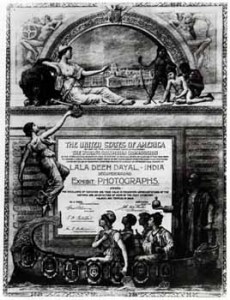
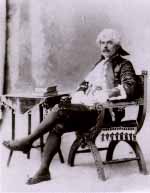 |
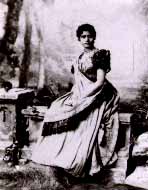 |




